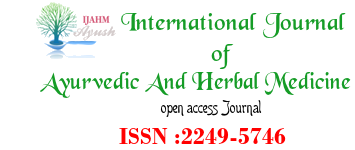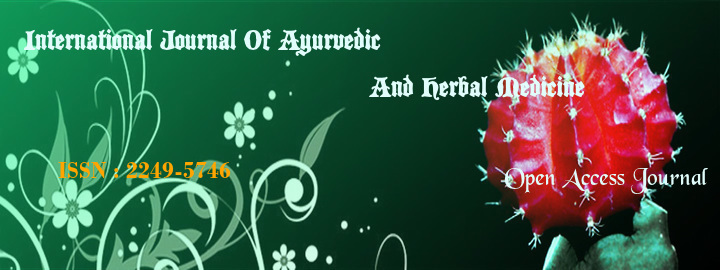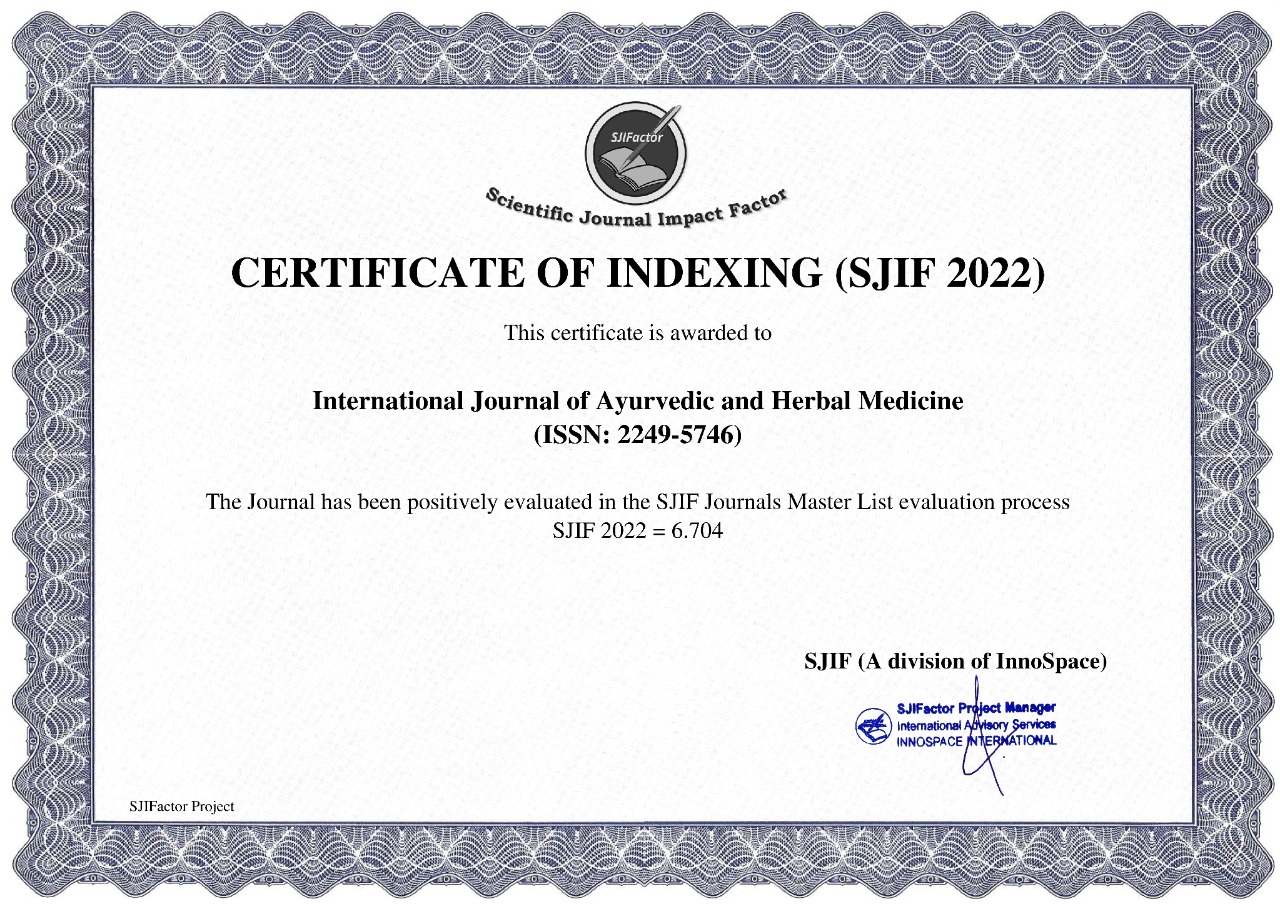


Somnath De1, NilanjanaMondal2, Susmita Bhowmick3, Puja Giri4, Snighadha Maji5, Moumi Das6, Siddhartha Chakraborty7.
Department of Biotechnology, Panskura Banamali College. West-Bengal. India.
Corresponding Author :- Somnath De
Address:- Assistant Professor, Department of Biotechnology, Panskura Banamali College
Abstract
Over three-quarter of the world’s population is using herbal medicines with increasing trend globally. Plant medicines may be beneficial but are not completely harmless. The aim of this study is to evaluate the antimicrobial activity of raw lemon and honey against different enteric human pathogens.Antimicrobial activity of lime juice is characterized by damage to the cell wall resulting in changes in cell morphology analysis of bacteria. Mixing lime juice with honey was also shown a maximum zone of inhibition against pathogenic fungi Candida albicans. Traditionally in Indonesian, lime juice added honey is often used as a cough medicine.
Keywords:
Antibacterial activity, honey, lemonjuice.
References
1- Cruickshank R,(1968). Medical Microbiology: a guide to diagnosis and control of infection. 11th ed. Edinburgh and London: E & SLivingstone Ltd. pp. 50-97.
2- Akinyemi KO, Oladapo O, Okwara CE, Ibe CC, Fasure KA,(2005). Screening of crude extracts of six medicinal plants used in Southwest Nigerian orthodox medicine for anti-methicillin resistant Staphylococcus aureus activity. BMC Complement AlternMed.5: 6.
3- Owhe-Ureghe UB, Ehwarieme DA, Eboh DO,(2010). Antibacterial activity of garlic and lime on isolates of extracted carious teeth. Afr J Biotech.9: 3163-3166.
4- Patel RV, Thaker VT, Patel VK, Shukla P, Bhatnagar P, Patel A,(2010).In-vitro study of changing antibiotic (Azithromycin) sensitivity and resistance by honey on gingival inflammation during orthodontic treatment a preliminary report. Orthodontic CYBER journal. 3-8.
5- Mondal S, Mirdha BR, Mahapatra SC,(2009). The science behind sacredness of Tulsi (Ocimum sanctum Linn.). Indian J PhysiolPharmacol.53: 291-306.
6- Manisha, D.M & Shyamapada M, (2011). Honey: Its Antibacterial Activity. Asian Pacific Journal of Tropical Medicine. 154-160.
7- National Honey Board (1994). Honey Definitions, Bee journal.23: 117-118.
8- White, J.W. (1966) Inhibition and Glucose Oxidase in Honey - A review. Am. Bee J.: pp. 2449-2451.
9- Sound Health (2013).The Superiority of Raw Honey [Online]. Available from: http://www.healthymuslim.com/articles/iiyhu-the-superiority-of-raw- honey.cfm.
10- Subrahmanyam, & Jibril O, (2001). Antibacterial Activity of Honey on Gram Positive & Gram Negative Bacterial. Classification of Bacteria. pp. 45-47.
11- Al-jibril, (2002). Clinical Observation on The Wound Healing Properties of Honey. Clinical Treatment of Wound. 75:5-7.
12- Kwakman, P.H.S., Zaat, S.A.J, (2012). Antibacterial Components of Honey. IUBMB Life. 64: 48–55.
13- Tumin, N, Arsyiah, N, Halim A, Shahjahan M, Noor Izhan N.J, Munavvar A.S, Abdul, H.K, Mohsin, S.S.J, (2005). Antibacterial Activity of Local Malaysian honey. Malaysian Journal of Pharmaceutical Sciences. 3 : 1 – 10.
14- Ahmed, M, Djebli, N, Meslem, A, Aissat, S, (2012). Antibacterial Activity of Various Honey Types of Algeria against Pathogenic Gram-negative Bacilli: Escherichia coli and Pseudomonas aurogenosa. Asian Pacific Journal of Tropical Disease. pp. 211
15- Zumla, A. and Lulat, A.,(1989). Honey – A Remedy Rediscovered. Journal of the Royal Society of Medicine. 82 : 384 – 385.
16- Molan, P. & Peter, O, (1992).Honey for The Treatment Of Infections. The New zealand & Bee Keeper Waitako Honey Research Unit. 216: 19-20.
17- Khali, I, Motallib, M, Anisuzzaman, S, Hye, M, (2001). Antibacterial Effect of Different Brands of Unifloral Honey available in Northern Region of Bangladesh. The Sci.16 : 382-392.
18- Chanthaphon A.; Chanthachum , S. and Hongpattarakere ,T. (2008).Antimicrobial activities of essential oils and crude extracts from tropical Citrus spp.against food-related microorganisms. Songklanakarin J. Sci. Technol. 30 : 125-131.
19- Lawal, D.; Bala J. A.; Aliyu, S. Y. and Huguma, M. A, (2013). Phytochemical screening and in-vitro antibacterial studies of the ethanolic extract of Citrus senensis (Linn.) peel against some clinical bacterial isolates . Int .J. Innova. App. Studies. 2 :138-145.
20- Matasyoh ,J.C. ; Kiplimo, J.J. ; Karubiu, N.M .and Hailstorks ,T.P, (2007). Chemical composition and antimicrobial activity of essential oil of Tarchonanthus camphorates. Food Chem. 101:1183-1187.
21- Mahmud ,S.; Saleem, M.; Siddique,S.; Ahmed,R.; Khanum, R. and Perveen, Z, (2009).Volatile components, antioxidant and antimicrobial activity of Citrus acidavar. sour lime peel oil. J .Saudi Chem .Soc . 13: 195-198.
22- S.F. Bloomfield, Methods for assessing antimicrobial activity, Di dalam: S.P. Denyer, W.B. Hugo (ed),(1991). Mechanism of Action of Chemical Biocides Thesis Study & Explanation, Blackwell Scientific Publication, London.
E., 23 Monzon, A., Rodriguez-Tudela, J. L. and the Eurofung Network,( 2002).Comparative evaluation of two different methods of inoculums preparation for antifungal susceptibility testing of filamentous fungi. J. Antim. Chem.50 : 719-722.
1-
index























